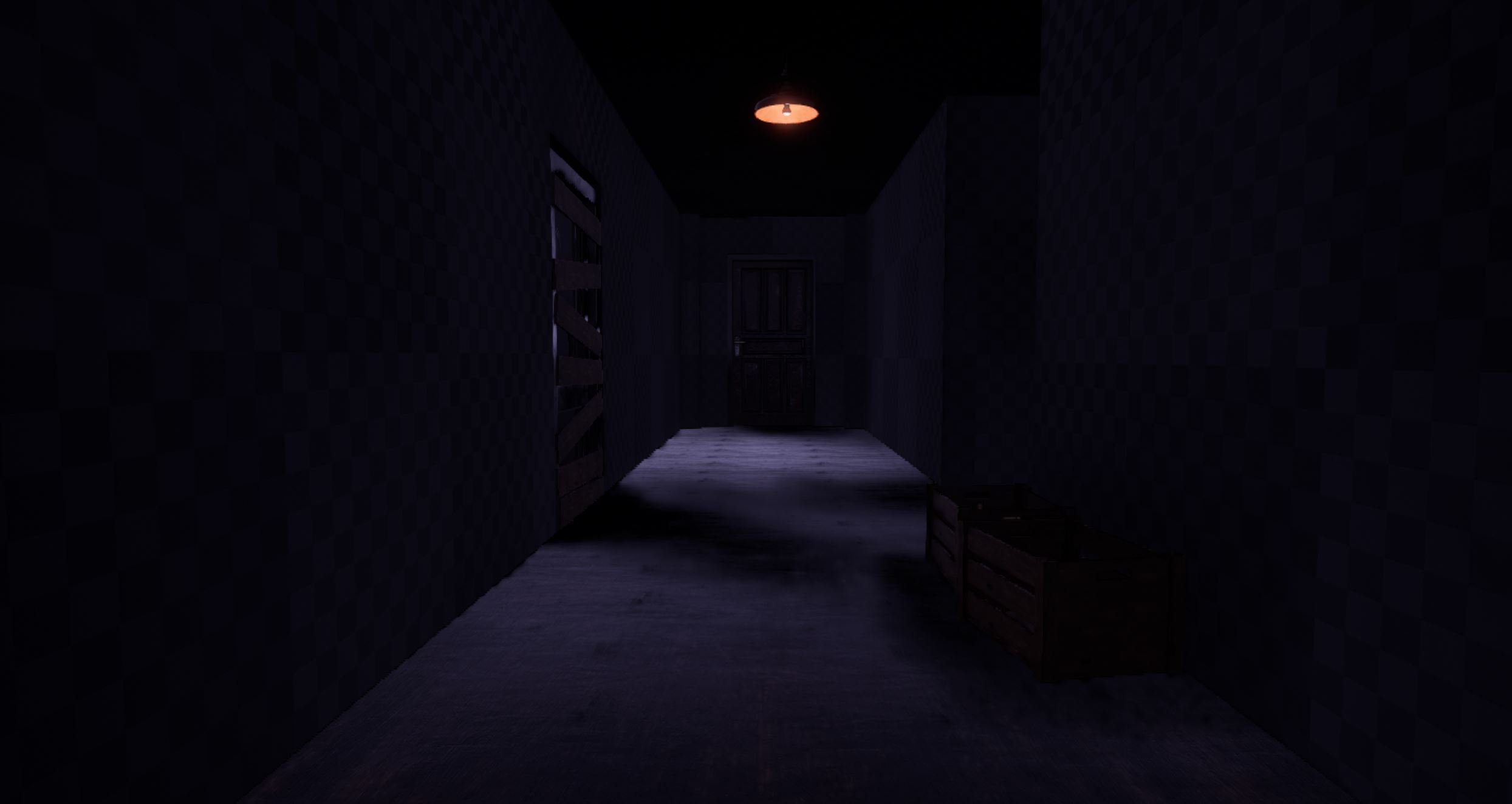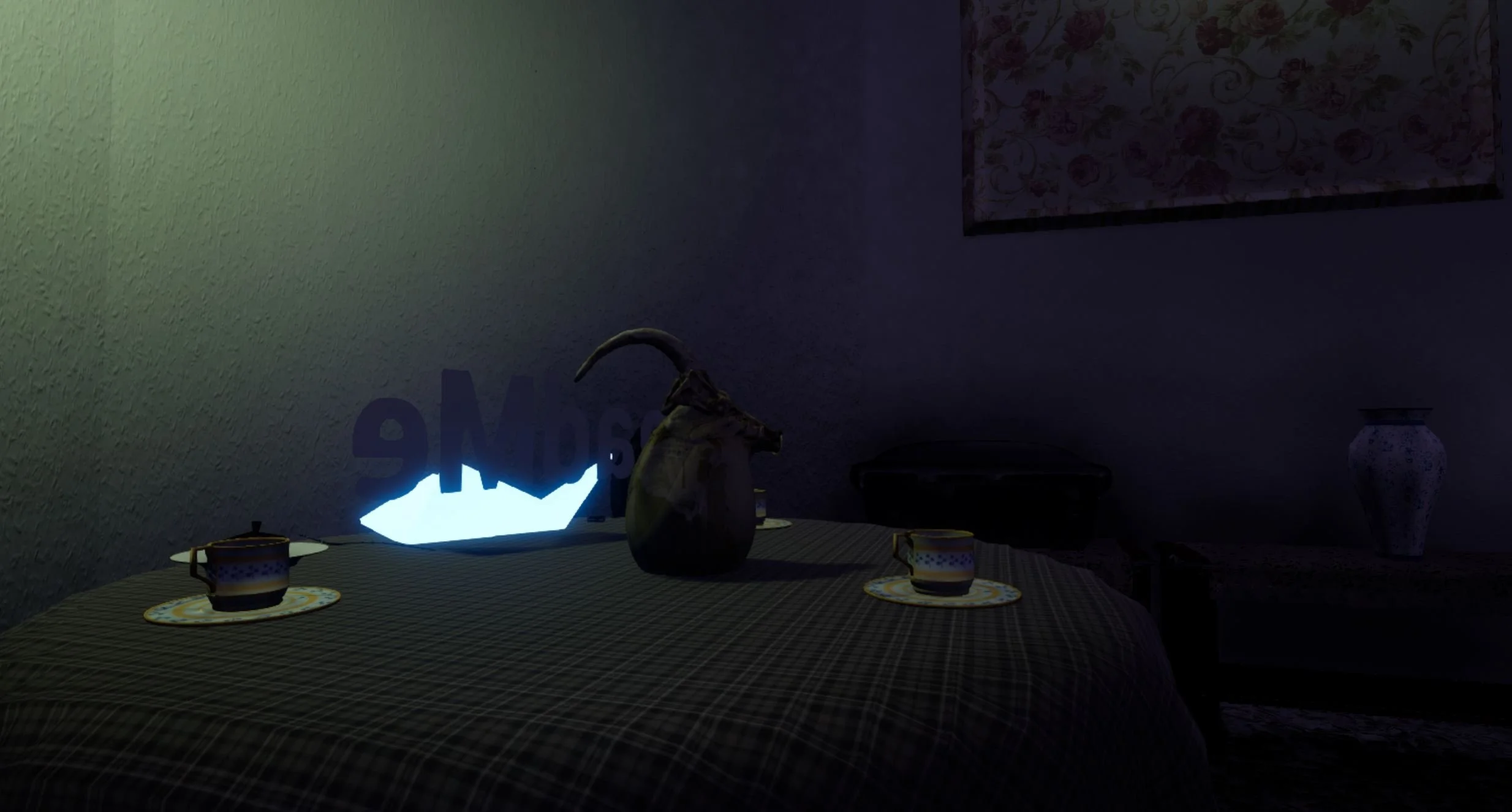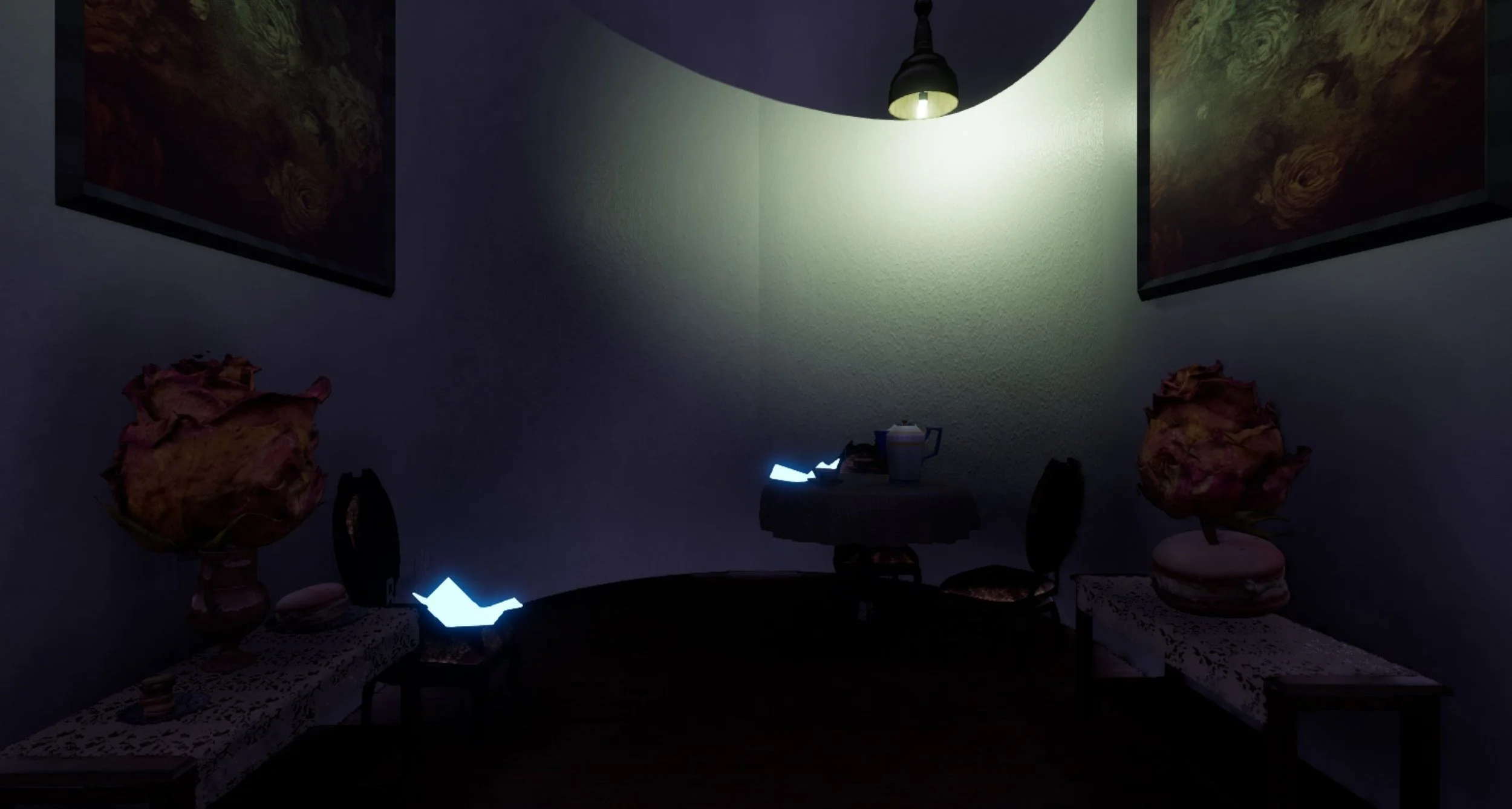THE DREAM
The Dream is an explorative, non-combat prototype designed to immerse players in an irrational world structured around two distinct levels: a beach and a mansion. Each reflects a different aspect of the player's psyche and emotional journey. The primary goal is to create an atmospheric experience where players roam and engage with the environment, uncovering a narrative through visual storytelling and interactive elements.
The Mansion (wip)
A dark place where the player confronts trauma, surrounded by enemies with no means of resistance.
A dark place where the player confronts trauma, surrounded by enemies with no means of resistance.
A dark place where the player confronts trauma, surrounded by enemies with no means of resistance.
Quick navigation:

Always ring the bells
the brain activates the mansion second awareness , a change in both space and state
Screens
DESIGN - Behind the scenes: Explaining the why’s
Repurposed a prototype from an earlier Unreal 5 game jam and reused the “Vision” mechanic, a flashlight that reveals or conceals objects when illuminated
Narrative Structure
The Mansion represents reminiscence, a surreal space where players confront fragments of theur past through light platforming, classic puzzles, and layered storytelling.
The flashlight mechanic takes centre stage, revealing hidden elements in the darkness and heightening the sense of mystery. Rich sound design enhances the atmosphere, building tension throughout.
The mansion’s fragmented layout and incoherent décor mirror the disjointed nature of memory and dreams. A central flow puzzle anchors the experiene, with cryptic notes scattered across the space offering clues and lore.
Design Highlights
- ● Linear open progression
- ● Soft-gated interactions
- ● Atmospheric storytelling through environment and sound
- ● Puzzles and cerebral challenges
- ● Presence of non-killable enemies and bosses
- ● Narrative storytelling through notes and environment
- ● Sound design for all interactive elements
- ● Flashlight ”vision” mechanic
The brain erases memories, for safety...
Layout and map sketches

Gameplay Showcase
Do not steal her heart - she waits for it ‘‘Boss Encounter’’
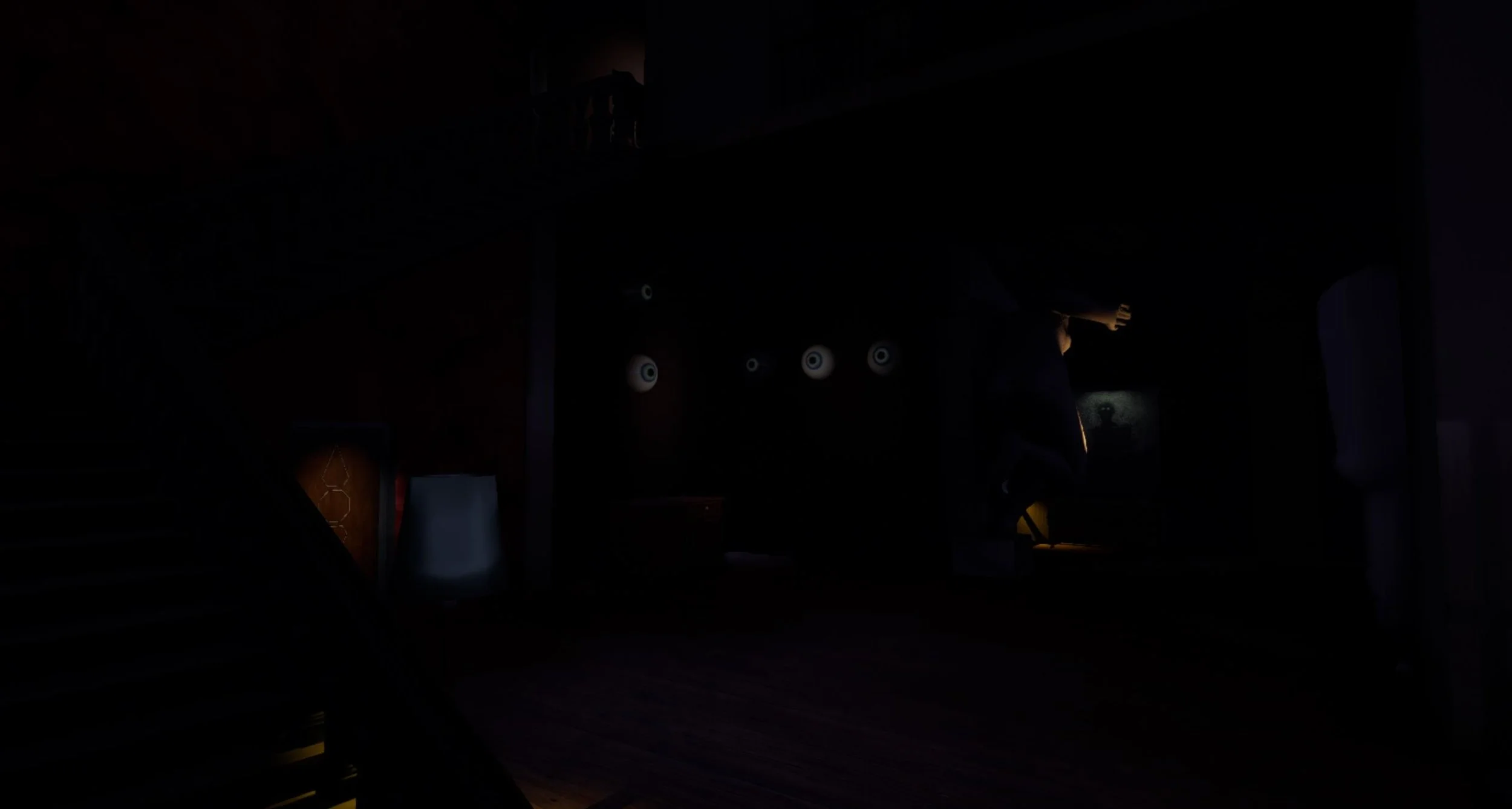
Never alone, never at ease. Always being watched
Eyes track the player’s every move, instilling a quiet paranoia, a presence always watching, reminding them they are never alone, never safe.
Never alone, never at ease. Always being watched.
Never alone, never at ease. Always being watched.
Eye Movement Desensitization and Reprocessing
The design for this sequence draws partly from EMDR therapy, which uses guided eye movements to help process traumatic memories. I adapted that concept into the level by introducing a slow-moving eye in the first room. It establishes a subconscious rhythm of focus and surveillance. The goal was to make the player feel both observed and exposed, mirroring the uneasy tension between introspection and control.
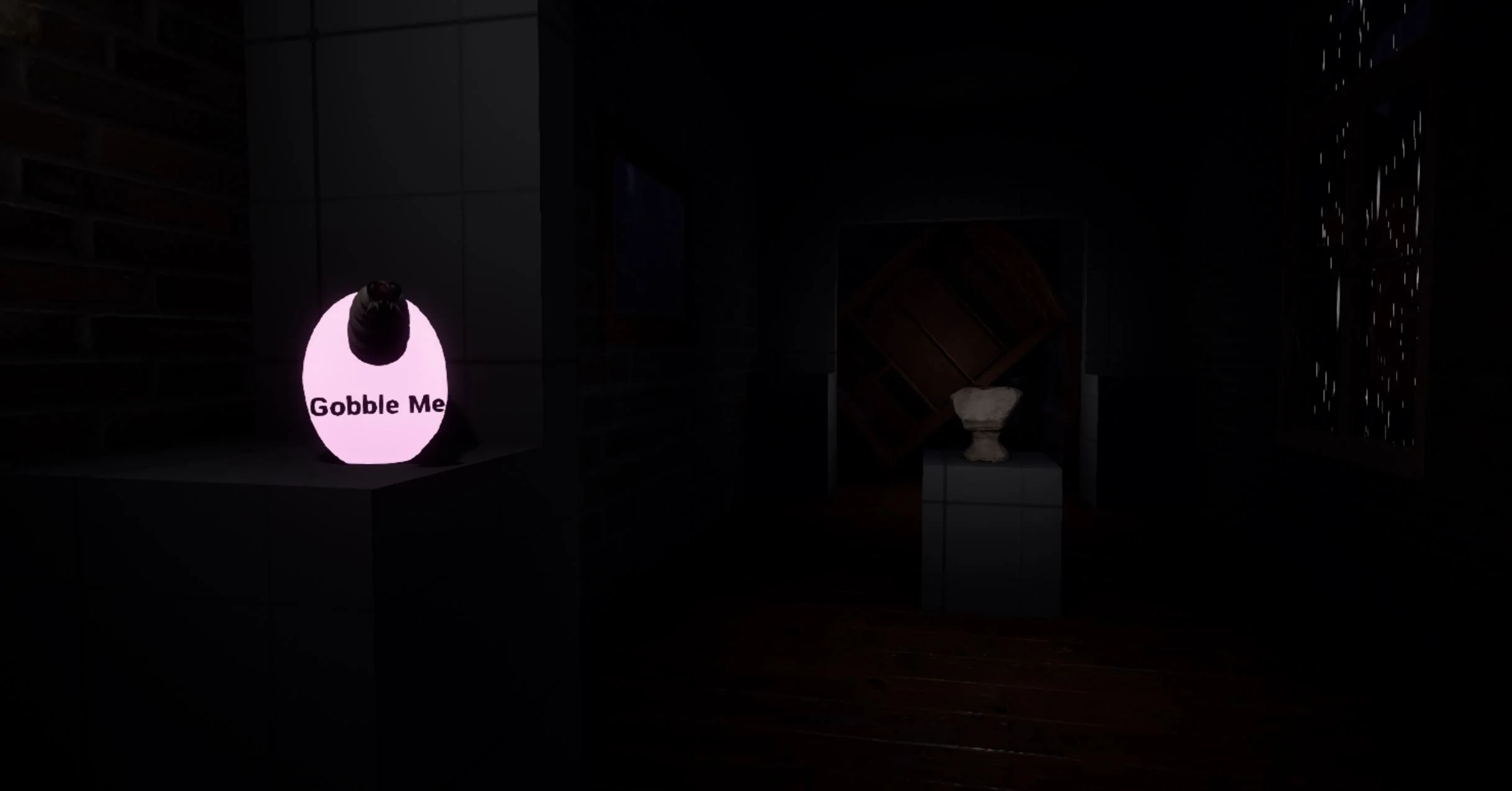
Light brings news sights
Worms feed the body, but the mind craves more.
Light reveals what’s hidden, opening the world with each flicker.
You never know what waits behind a wall…until it’s lit.
Inspired by Alice in Wonderland, the “Gobble Me” worm twists the familiar eat me motif into something unsettling , a fleshy lure that fuels the light and tempts players toward the unseen.
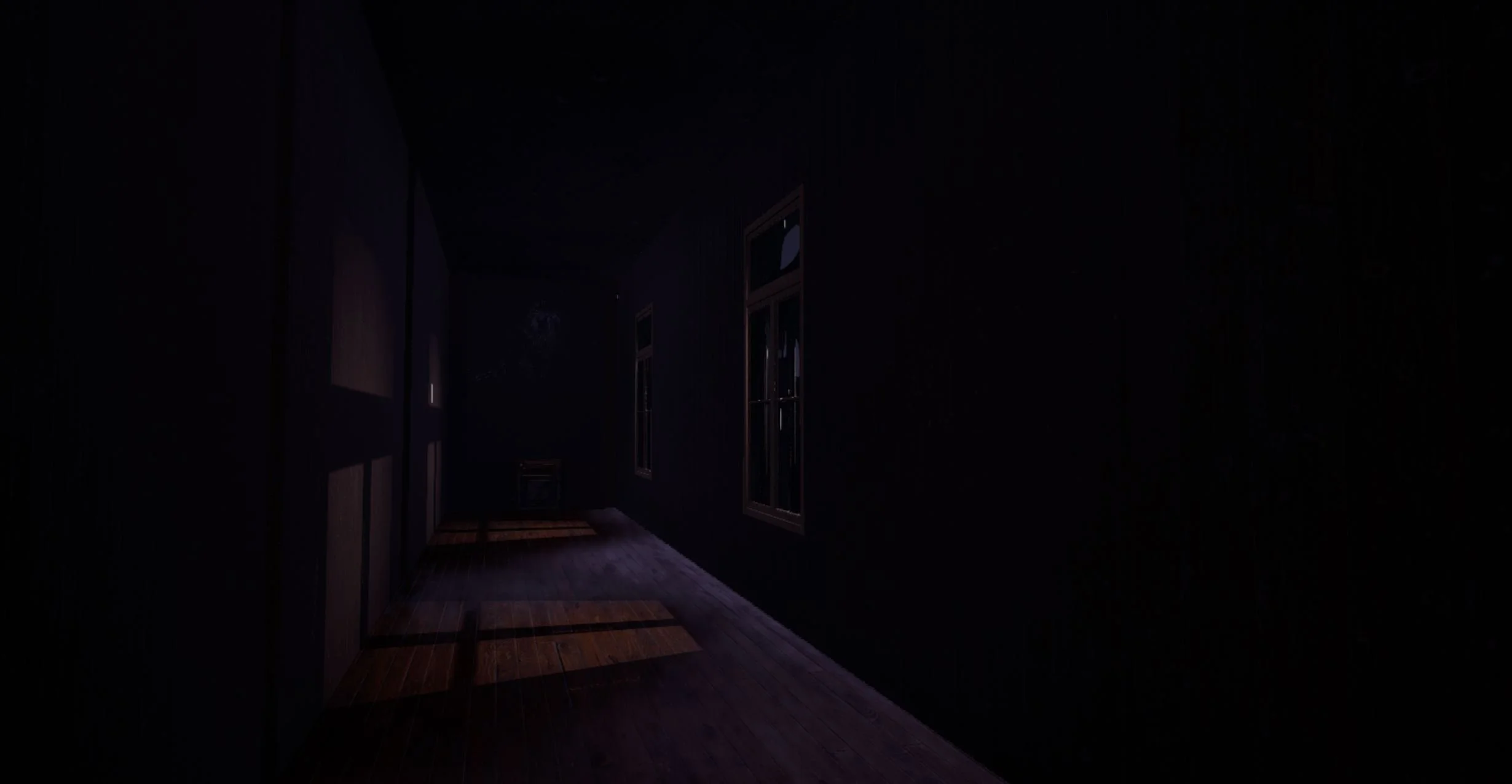
They play with your nerves
Being trapped in a corridor with a flying painting?
Paintings belong on walls, still, silent, and meant to be observed.
In this corridor, they do none of that. They float. They pursue.
Something decorative becomes something dangerous.
The way out is unclear. Nothing is normal.
The sound is not random… it’s a voice, a tormented soul trapped inside the frame.

Smileys know best
A story rests, tucked into a pillow. A boy, his fear, his joy, his curiosity.
To remember him, choose the emotions that echo his story.
If you’re right, the memory drifts away in peace.
If you’re wrong, it lingers… waiting for you to understand.







